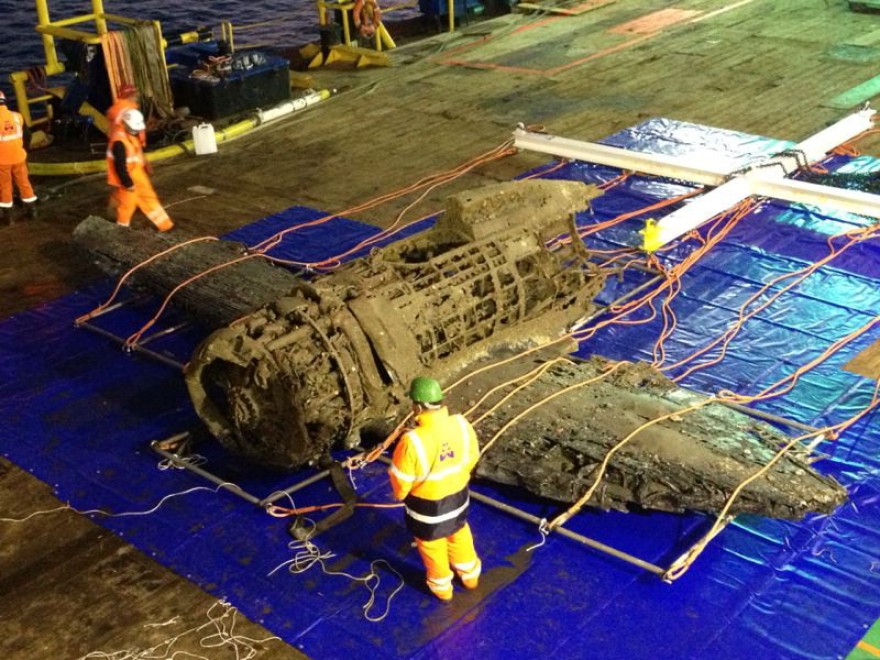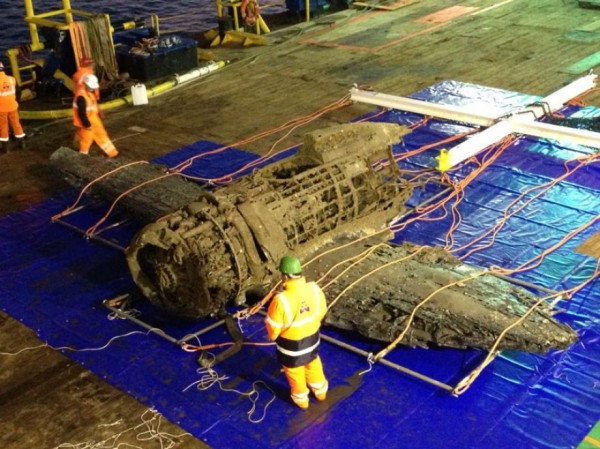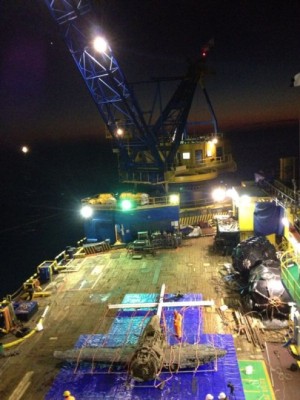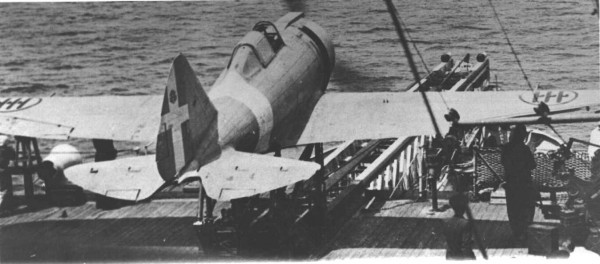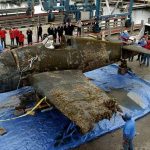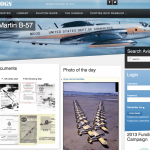The “Falco” ( Italian for hawk) has come to light: yesterday the mission to recover the fighter Re.2000 was successfully completed. The Reggiane’s fighter had sunk in the waters of Portovenere (La Spezia) in 1943.
The operation was carried out for free by the company Micoperi (the same company which has completed he straightening of the cruise ship Costa Concordia).The Falco, originally discovered in April 2012, was about twenty feet deep and it crashed off the Liguria coast during a training mission.
Officine Meccaniche Reggiane SpA was an Italian aircraft manufacturer, owned by Caproni (Count Giovanni Battista Caproni) and situated in Reggio Emilia, a city of what today is the Emilia-Romagna region. The first aircraft produced was the medium bomber Piaggio P.32bis, which had been developed from the Caproni Ca.405C Procellaria.
Reggiane would eventually become famous for its agile single-seat fighter aircraft. When World War II erupted, Reggiane’s fighters were taken over by the Regia Aeronautica (the Italian Air Force). Other fighters found their way to the German Luftwaffe and to the Hungarian and Swedish Air Forces.
A low wing monoplane with retractable landing gear, the Reggiane Re.2000 Falco I prototype, powered by a 870 hp (649 kw) Piaggio P.XI RC.40 radial engine, was flown for the first time in 1938. Competitive evaluation against the MC.200 resulted in this latter aircraft being ordered into production for the Regia Aeronautica, although the Re.2000 had shown itself to be superior in manoeuvrability, even when flown against the Messerschmitt Bf109E.
However, the Re.2000’s deficiencies (primarily structural) did not deter export customers and the type was built for the Hungarian government, which also acquired a manufacturing licence. The type was operated by the Hungarian Air Force as the Hejja (hawk). Re.2000s were supplied also to Sweden being operated until 1945 by the Flygvapen under the designation J20. And though the type had been rejected by the Regia Aeronautica, the Italian navy acquired 12 Re.2000 Serie II fighters especially strengthened for catapult launching, followed by 24 Re.2000 Serie III aircraft with increased fuel capacity for deployment as long range fighters. ( Source Century-Of-Flight.net)
The aircraft was a Re.2000 Cat (catapult configuration) version based at Luni-Sarzana (La Spezia) was intended to board the battleship Vittorio Veneto. On April 16, 1943 it was making a reconnaissance flight over the gulf, with Marshal Luigi Guerrieri at the controls when, due to an abnormal consumption of fuel, the pilot decided to make an emergency landing and emerged unscathed.
The recovery was commissioned by by the Aeronautica Militare Italiana (Italian Air Force) and authorized by the Superintendence for Archaeological Heritage and the Superintendence for the Historical and Artistic Heritage of Liguria.The aircraft, after the immediate desalinization process, will be transported to the Museum of the Italian Air Force at Vigna Di Valle.







